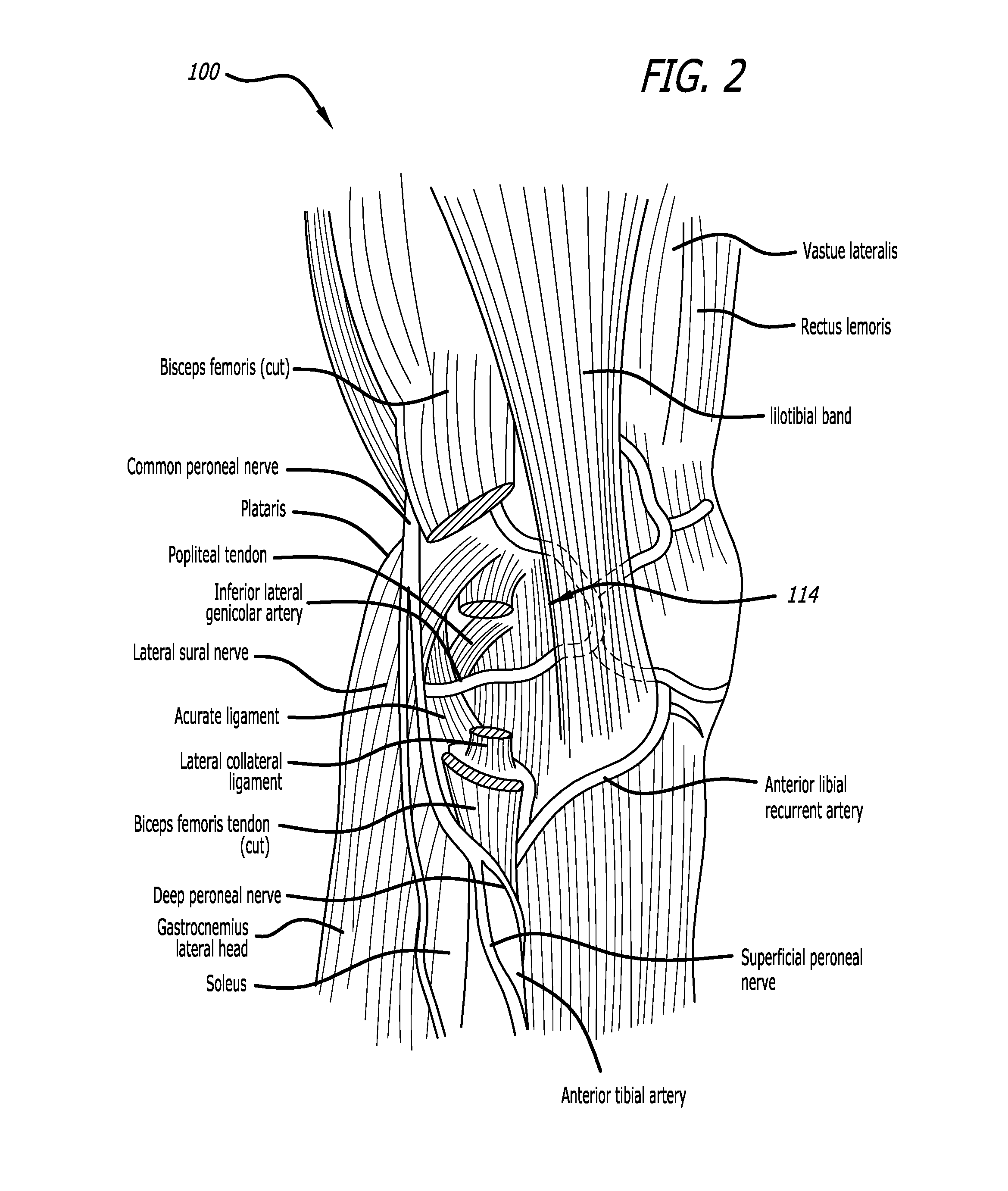Load Transferring Systems and Methods for Transferring Load in a Joint
a load transfer and joint technology, applied in the field of body anatomy structure attachment, can solve the problems of imbalance of forces and pain in the affected joint, requiring substantial recovery periods, and no current available chondroprotective therapies
- Summary
- Abstract
- Description
- Claims
- Application Information
AI Technical Summary
Benefits of technology
Problems solved by technology
Method used
Image
Examples
Embodiment Construction
[0042]The present disclosure now will be described more fully hereinafter with reference to the accompanying drawings. The disclosure may be embodied in many different forms and should not be construed as limited to the embodiments set forth herein; rather, these embodiments are provided so that this disclosure will satisfy applicable legal requirements. Like numbers refer to like segments throughout. As used in this specification and the claims, the singular forms “a,”“an,” and “the” include plural references unless the context clearly dictates otherwise.
[0043]As described herein, embodiments of the disclosure relate to load transferring systems for a joint, and related methods. In one exemplary embodiment, the load transferring systems and methods are configured to address osteoarthritis of the lateral compartment of a knee joint. However, it should be understood that the systems and method described herein may be employed with other joints and maladies associated therewith.
[0044]...
PUM
 Login to View More
Login to View More Abstract
Description
Claims
Application Information
 Login to View More
Login to View More - R&D
- Intellectual Property
- Life Sciences
- Materials
- Tech Scout
- Unparalleled Data Quality
- Higher Quality Content
- 60% Fewer Hallucinations
Browse by: Latest US Patents, China's latest patents, Technical Efficacy Thesaurus, Application Domain, Technology Topic, Popular Technical Reports.
© 2025 PatSnap. All rights reserved.Legal|Privacy policy|Modern Slavery Act Transparency Statement|Sitemap|About US| Contact US: help@patsnap.com



